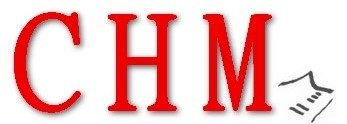Video by Wampler Pedals via YouTube
Source

🔥 Interested in learning guitar pedal electronics?
My newest course, *“Complete Beginners Guide: How to design your own guitar pedal circuits”* will detail exactly how to do this, even if you have *zero experience with electronics*
I’ll personally teach you using easy to understand language, no math involved, and we’ll do it with a guitar in hand.
https://www.guitarpedalcourse.com/
*Use coupon code ➡️ youtube15 ⬅️ to get an automatic 15% discount!*
_____________________________________________________________________
🔥 Synergy unit
Timestamps
00:00 Intro
02:47 Clean tone
03:05 Synergy distorted tone
03:20 Behringer Tube Monster circuit discussion
04:19 Behringer distorted tone
05:03 Behringer Tube Monster circuit discussion (continued)
05:47 Seymour Duncan circuit discussion
06:34 Seymour Duncan Twin Tube distorted tone
07:47 B. K. Butler Tube Driver circuit discussion
08:45 B. K. Butler Tube Driver distorted tone
09:29 Radial Tonebone Classic circuit discussion
10:35 Radial Tonebone Classic distorted tone
12:17 Side by side comparison of all
13:38 Overall thoughts
In this video, I explore the fascinating world of tube-based guitar pedals and compare them to traditional tube amplifiers. While distortion and overdrive pedals are prevalent, tube-based pedals have become more niche over the years. This comparison aims to highlight the differences, similarities, and unique characteristics of these pedals.
I start by discussing the history and current status of tube-based pedals. A decade ago, these
pedals were more popular, with models like the Tube Driver being a staple on many pedalboards. Today, though, brands like Friedman and Kingsley still produce tube pedals, they are less common. The circuits in these pedals differ significantly from those in tube amps, particularly in how they clip the signal. This difference can make it challenging to replicate the exact sound of a high-gain tube amp with pedals alone.
To illustrate these points, I compare several classic tube pedals to one of my favorite tube “amps”, the Synergy Module (Mark II CP). This all-tube, high-voltage unit is based on the Mark II C+ amp and provides additional high-gain, high-voltage tube channels to an existing amp. I demonstrate its capabilities by playing through a clean channel and then with higher gain settings.
Next, I introduce the Behringer Vintage Tube Monster, a clone of the Ibanez Tube King TK999. This pedal features a noise gate and operates at lower voltage, combining tubes with op-amps for a distinct sound. It produces a crunchy, sizzly tone, with the tubes starved for voltage to enhance distortion.
I then showcase the Seymour Duncan Twin Tube, which operates at higher voltage and functions more like a traditional tube amp. It uses non-standard tubes to achieve its sound, producing a fuzzy tone that requires careful adjustment to control the bass for a crunchier distortion.
The BK Butler Tube Driver follows, a pedal similar in design to the Behringer Tube Monster. It uses op-amps to boost the signal before distorting it with tubes. While not an exact replica of a tube amp, it provides a unique clipping and distortion characteristic.
Lastly, I present the Radial Tonebone, a pedal that was highly popular in the early 2000s. It offers various tone-shaping switches and uses tubes like clipping diodes with minimal voltage, combining op-amps and tube clipping. I demonstrate it with a medium gain setting, showcasing its versatility and sound quality.
After comparing these tube-based pedals, I revisit the Synergy module and play each circuit side by side to highlight the differences and similarities in their tube-based sounds.
Comment below with your favorite tube-based pedals and how they compare to traditional tube amps.
